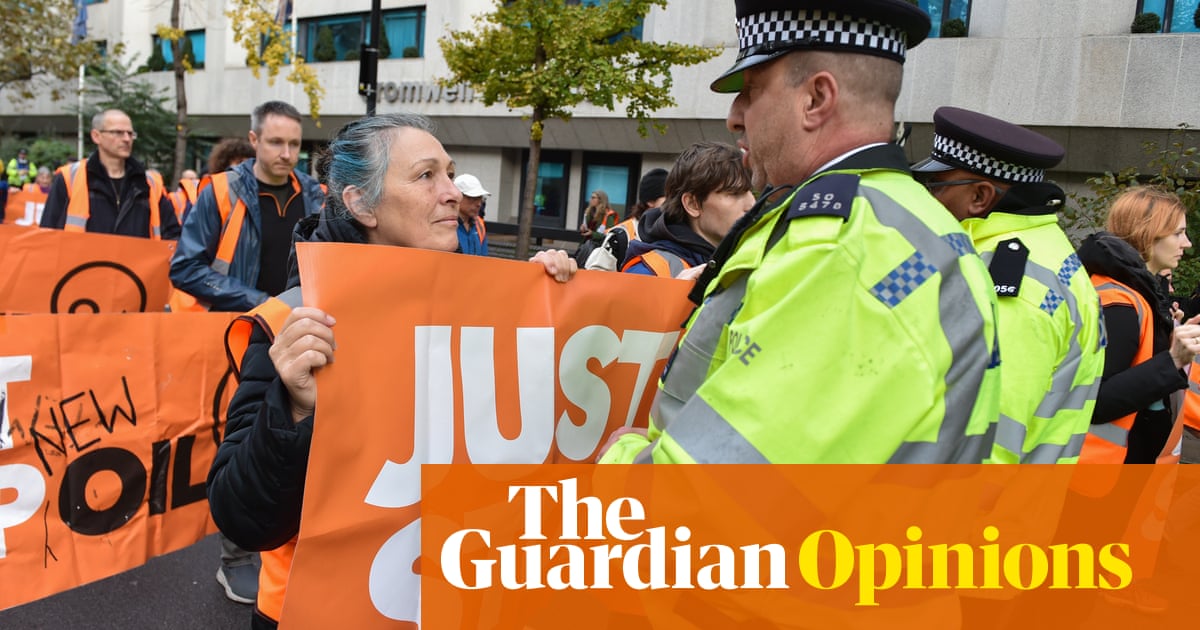
About a third of human-caused methane emissions come from livestock, mostly from beef and dairy cattle, produced in the digestive process that allows ruminants (hoofed animals including cows, sheep and goats with four-part stomachs) to absorb plants.
Cows and other farm animals produce about 14% of human-induced climate emissions, and it is methane from their burps and manure that is seen as both the biggest concern and best opportunity for tackling global heating.
Although methane breaks down relatively quickly in the atmosphere, it is a more potent greenhouse gas than carbon dioxide. Reducing these emissions has been touted as one of the most immediate opportunities to slow global heating ahead of the Cop26 UN climate talks in Glasgow.
“Cutting methane is the biggest opportunity to slow warming between now and 2040,” Durwood Zaelke, a lead reviewer for the Intergovernmental Panel on Climate Change, said in August.
Options for reducing methane include alternative feeds for cattle, reducing food loss and waste, and cutting meat and dairy production.
The UN wants a shift away from outsized meat and dairy industries, especially in high-income countries. Yet, production continues to rise.
While the US and EU made a joint pledge last month to reduce methane emissions by almost a third in the next decade, there are no specific commitments for the farming sectors.
“No country has a real target to reduce its livestock-related emissions or meat consumption,” says Christine Chemnitz, head of agricultural policy at Heinrich Böll Stiftung, an environmental NGO.
New Zealand is the only country to pass legislation to cut greenhouse gases from livestock, but with farming emissions still rising, the government has been advised cow numbers will need to be cut to meet targets.
The UK’s legally binding commitment to be net zero by 2050 has no specific targets for the farming sector. The government’s net zero plan only goes as far as committing that “75% of farmers in England will be engaged in low-carbon practices by 2030”.
Scottish government climate plans have set a target for reducing emissions from farming to 9% below 2018 levels by 2032, but include no specifics on livestock.
In Europe, Denmark has recently passed a legally binding target to reduce climate emissions from the agricultural sector by at least 55% by 2030 compared with 1990 levels, but again nothing specific on livestock.
In the US, the state of California has a target for reducing emissions from the livestock sector by 40% below 2013 levels by 2030, but is not on track to meet that target.
“The legally binding targets that we see from countries are not sector specific. They tend to set emissions targets with flexibility about how they are achieved,” says Ben Henderson, agricultural policy analyst at the Organisation for Economic Co-operation and Development (OECD).
Brazil and Argentina, two of the biggest producers of beef products and animal feed crops in the world, are reported to have argued strongly against UN recommendations that reducing meat consumption is necessary to cut greenhouse gas emissions.
While countries may be wary of being tied into actions, the EU’s target of reducing emissions by at least 55% by 2030 is one commitment that is “definitely not fulfillable without reductions in livestock and meat consumption”, says Chemnitz.
Northern Ireland, which has seen an increase in meat production in the past decade, could require an 86% cut in cattle and sheep numbers to meet its net zero target. While the Irish government has been advised that a 51% reduction in climate emissions by 2030 is not achievable with its ever-expanding dairy industry.
“Like climate itself a decade or two ago, the science for needing to address agriculture and diets is strong, but the political will to skew the system to making [environmentally] harmful things less available and better things, like fruit and veg, more available and cheaper, and helping the market adjust to improve people’s health and the planet is lacking,” says Prof Tim Benton, research director at Chatham House.
Despite the absence of climate-specific targets for livestock farming in Europe, there are environmental policies that could restrict the meat and dairy sectors. The Netherlands, for example, has recently been forced to propose radical plans to cut livestock numbers by almost a third to help lower ammonia pollution.












